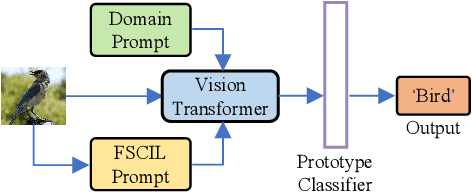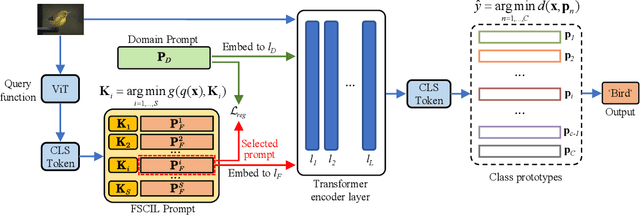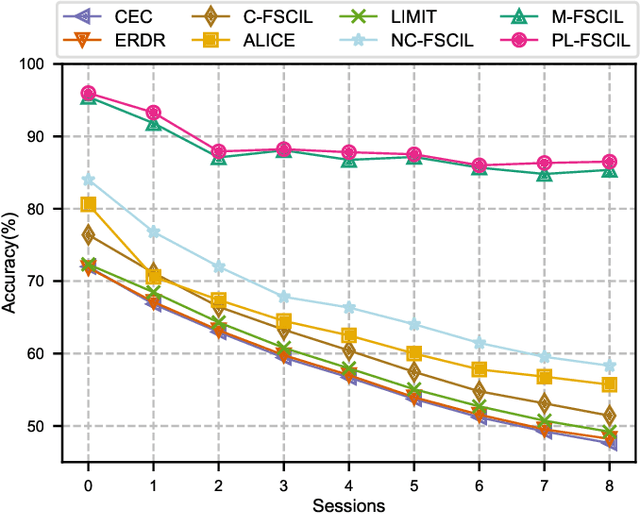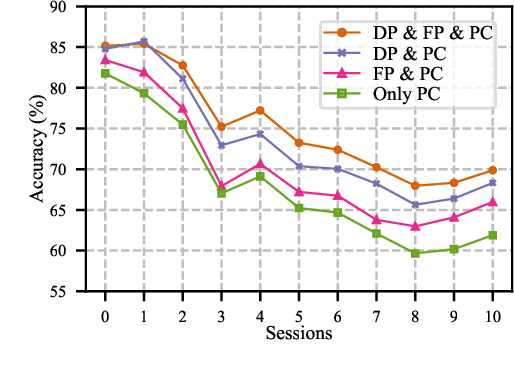Songsong Tian
PL-FSCIL: Harnessing the Power of Prompts for Few-Shot Class-Incremental Learning
Jan 26, 2024



Abstract:Few-Shot Class-Incremental Learning (FSCIL) aims to enable deep neural networks to learn new tasks incrementally from a small number of labeled samples without forgetting previously learned tasks, closely mimicking human learning patterns. In this paper, we propose a novel approach called Prompt Learning for FSCIL (PL-FSCIL), which harnesses the power of prompts in conjunction with a pre-trained Vision Transformer (ViT) model to address the challenges of FSCIL effectively. Our work pioneers the use of visual prompts in FSCIL, which is characterized by its notable simplicity. PL-FSCIL consists of two distinct prompts: the Domain Prompt and the FSCIL Prompt. Both are vectors that augment the model by embedding themselves into the attention layer of the ViT model. Specifically, the Domain Prompt assists the ViT model in adapting to new data domains. The task-specific FSCIL Prompt, coupled with a prototype classifier, amplifies the model's ability to effectively handle FSCIL tasks. We validate the efficacy of PL-FSCIL on widely used benchmark datasets such as CIFAR-100 and CUB-200. The results showcase competitive performance, underscoring its promising potential for real-world applications where high-quality data is often scarce. The source code is available at: https://github.com/TianSongS/PL-FSCIL.
A Survey on Few-Shot Class-Incremental Learning
Apr 17, 2023Abstract:Large deep learning models are impressive, but they struggle when real-time data is not available. Few-shot class-incremental learning (FSCIL) poses a significant challenge for deep neural networks to learn new tasks from just a few labeled samples without forgetting the previously learned ones. This setup easily leads to catastrophic forgetting and overfitting problems, severely affecting model performance. Studying FSCIL helps overcome deep learning model limitations on data volume and acquisition time, while improving practicality and adaptability of machine learning models. This paper provides a comprehensive survey on FSCIL. Unlike previous surveys, we aim to synthesize few-shot learning and incremental learning, focusing on introducing FSCIL from two perspectives, while reviewing over 30 theoretical research studies and more than 20 applied research studies. From the theoretical perspective, we provide a novel categorization approach that divides the field into five subcategories, including traditional machine learning methods, meta-learning based methods, feature and feature space-based methods, replay-based methods, and dynamic network structure-based methods. We also evaluate the performance of recent theoretical research on benchmark datasets of FSCIL. From the application perspective, FSCIL has achieved impressive achievements in various fields of computer vision such as image classification, object detection, and image segmentation, as well as in natural language processing and graph. We summarize the important applications. Finally, we point out potential future research directions, including applications, problem setups, and theory development. Overall, this paper offers a comprehensive analysis of the latest advances in FSCIL from a methodological, performance, and application perspective.
 Add to Chrome
Add to Chrome Add to Firefox
Add to Firefox Add to Edge
Add to Edge